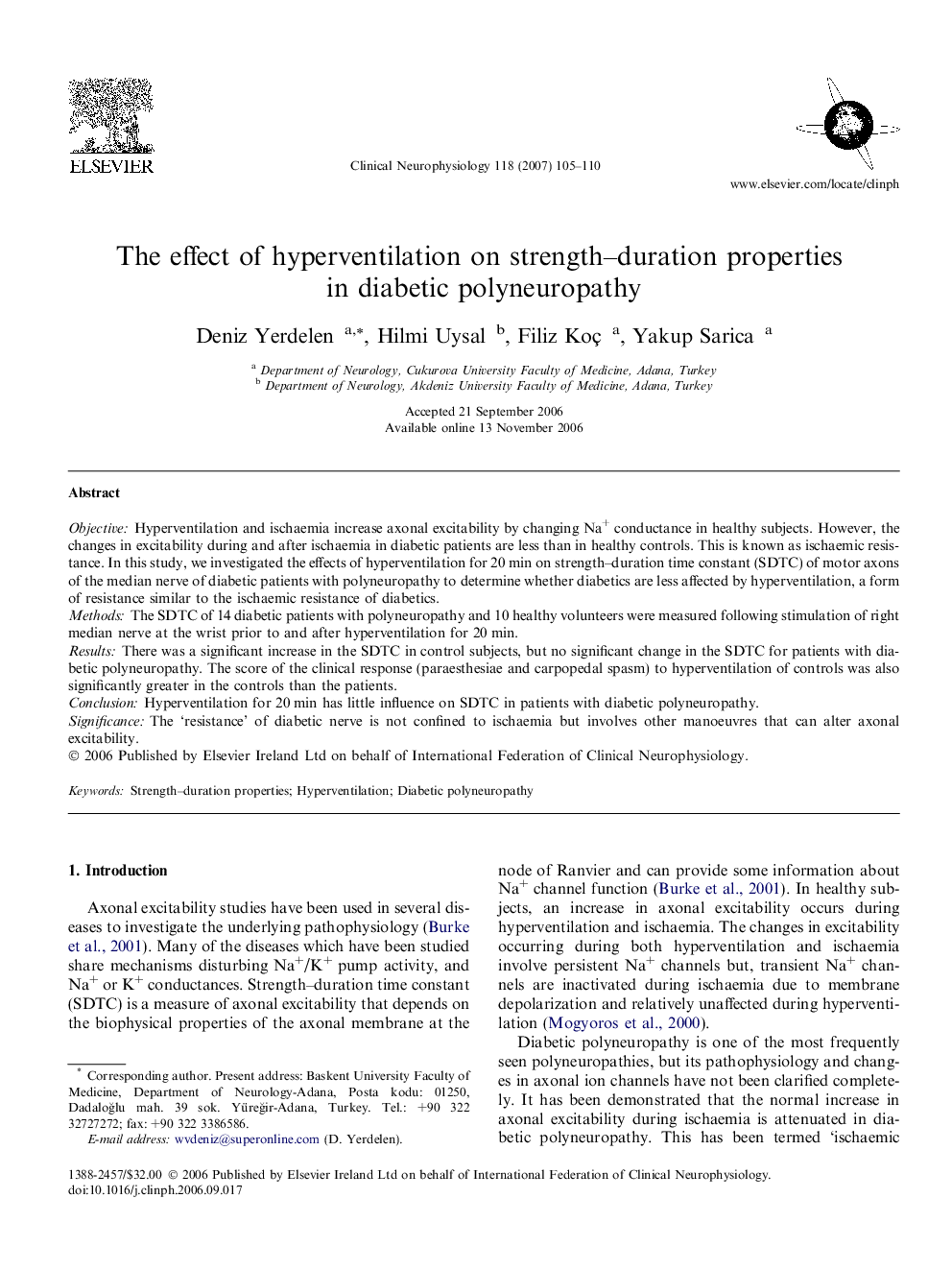| Article ID | Journal | Published Year | Pages | File Type |
|---|---|---|---|---|
| 3048175 | Clinical Neurophysiology | 2007 | 6 Pages |
ObjectiveHyperventilation and ischaemia increase axonal excitability by changing Na+ conductance in healthy subjects. However, the changes in excitability during and after ischaemia in diabetic patients are less than in healthy controls. This is known as ischaemic resistance. In this study, we investigated the effects of hyperventilation for 20 min on strength–duration time constant (SDTC) of motor axons of the median nerve of diabetic patients with polyneuropathy to determine whether diabetics are less affected by hyperventilation, a form of resistance similar to the ischaemic resistance of diabetics.MethodsThe SDTC of 14 diabetic patients with polyneuropathy and 10 healthy volunteers were measured following stimulation of right median nerve at the wrist prior to and after hyperventilation for 20 min.ResultsThere was a significant increase in the SDTC in control subjects, but no significant change in the SDTC for patients with diabetic polyneuropathy. The score of the clinical response (paraesthesiae and carpopedal spasm) to hyperventilation of controls was also significantly greater in the controls than the patients.ConclusionHyperventilation for 20 min has little influence on SDTC in patients with diabetic polyneuropathy.SignificanceThe ‘resistance’ of diabetic nerve is not confined to ischaemia but involves other manoeuvres that can alter axonal excitability.
